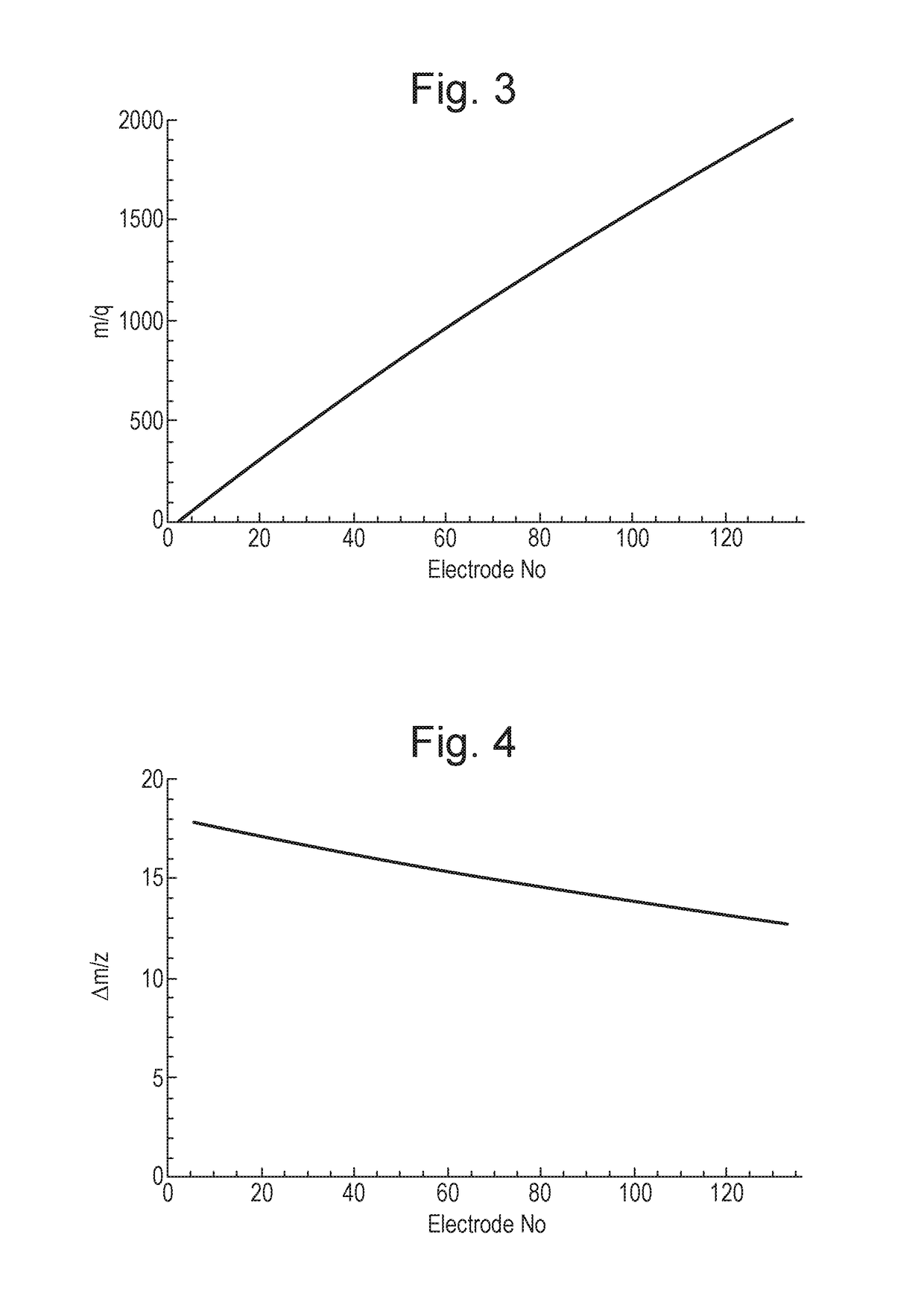Separating ions in an ion trap
a technology of ion traps and ions, applied in the field of ion filtering, can solve the problems of low mass to charge ratio, low physicochemical property distribution along the device, and low duty cycle, and achieve low space-charge effects and high duty cycl
- Summary
- Abstract
- Description
- Claims
- Application Information
AI Technical Summary
Benefits of technology
Problems solved by technology
Method used
Image
Examples
Embodiment Construction
[0301]Embodiments of the present invention provide an ion trap that separates ions within the ion trap according to a physicochemical property, e.g., mass to charge ratio.
[0302]A first set of embodiments provide a method and apparatus for mass filtering ions by trapping the ions in an ion trap of an ion filtering device, spatially separating the ions within the ion trap according to their mass to charge ratios, and then selectively ejecting ions from one or more sections of the ion trap such that ions having only the desired mass to charge ratios are onwardly transmitted.
[0303]A second set of embodiments provide a method and apparatus for improving the resolution of ion mobility measurements by trapping ions in an ion trap, spatially separating the ions within the ion trap according to their mass to charge ratios, and then pulsing the separated ions into an ion mobility separator (IMS) in a single pulse.
[0304]A third set of embodiments provide a method and apparatus for improving th...
PUM
| Property | Measurement | Unit |
|---|---|---|
| voltage | aaaaa | aaaaa |
| frequency | aaaaa | aaaaa |
| pressure | aaaaa | aaaaa |
Abstract
Description
Claims
Application Information
 Login to View More
Login to View More - R&D
- Intellectual Property
- Life Sciences
- Materials
- Tech Scout
- Unparalleled Data Quality
- Higher Quality Content
- 60% Fewer Hallucinations
Browse by: Latest US Patents, China's latest patents, Technical Efficacy Thesaurus, Application Domain, Technology Topic, Popular Technical Reports.
© 2025 PatSnap. All rights reserved.Legal|Privacy policy|Modern Slavery Act Transparency Statement|Sitemap|About US| Contact US: help@patsnap.com



